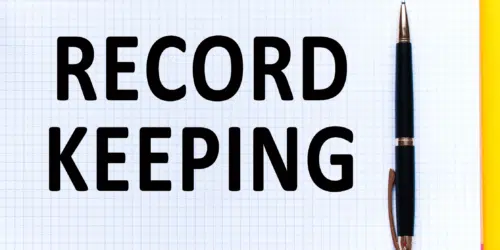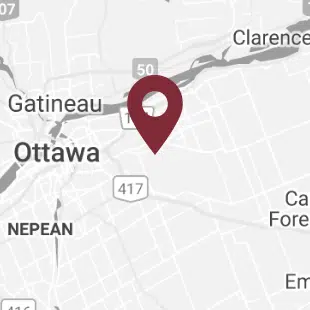There has been a steady reduction in the damages that innocent motor vehicle accident victims recover from the at-fault driver. The Ontario Government, working with the insurance industry, has been passing more and more restrictive laws and regulations to cut down on damage awards to innocent accident victims. The Ontario Court of Appeal recently released two decisions that will have a significant negative impact on the amount of money innocent car accident victims will be able to recover from at fault drivers.
In El-Khodr v. Lackie the innocent driver, Mr. El-Khodr, was seriously injured when the tow truck he was operating was rear-ended. Following a trial the jury awarded him damages totaling $2,931,006.
The trial judge had instructed the jury to regard the Ontario Drug Benefit Plan as a “contingency” meaning that it was not certain that the plan would still exist in 2028, the year in which Mr. El-Khodr would turn age 65 and first qualify for it. The Court of Appeal held that judge should have instructed the jury to award damages based on the law as it existed and that the Ontario Drug Benefit Plan should not be considered a “contingency”. Mr. El-Khodr would be eligible under the plan at age 65, and therefore the at fault party’s insurance company should only be required to pay for Mr. El-Khodr drug expenses until he turned 65.
Mr. El-Khodr qualified for life long benefits from his own insurance company (so called “collateral benefits”) because he was found to have suffered “catastrophic” injuries. The trial judge did not order Mr. El-Khodr to turn over (assign) these future benefits to the defendant’s insurance company. Several previous cases had required a strict “matching” between the types of damage recovered by the innocent party and the specific type collateral benefit he received before there could be such an assignment. The questions the jury had been asked to answer about the Mr. El-Khodr future damages did not identify each type of damage and the amount awarded for it. This meant that the required “matching” of the damages awarded at trial and future collateral benefits was not possible in this case.
The Court of Appeal held that in the case of Mr. El-Khodr it was not necessary to match both the specific kind of damages awarded by the jury with a specific kind of future collateral benefit. It was also not necessary to match the time when the future damage expense would be incurred with when the collateral insurance benefit would be available (“strict qualitative and temporal matching requirements should not be applied”). It held that “matching” was not necessary because Mr. El-Khodr was entitled to his other future collateral benefits for life. This meant that the jury’s damage award included all future expenses that would be paid by Mr. El-Khodr’s own insurance company as collateral benefits. This meant that if there was no assignment of the future benefits which Mr. El-Khodr received for medication, assistive devices and professional services, he would be over-compensated. His receipt of both damages after the trial and future collateral benefits for the same expenses would constitute double recovery.
The Court of Appeal ordered that any collateral benefits received by Mr. El-Khodr for future medication, assistive devices, professional services (psychological, physiotherapy, occupational therapy, massage therapy, kinesiology/ personal training, case management), and travel to medical or other specialist were assigned to the at fault driver’s insurance company.
The assignment of future collateral insurance benefits will significantly reduce the “net” amount of money Mr. El-Khodr and all other innocent accident victims will recover from all sources. Instead of using future collateral benefits to cover these expenses he will have to give the money to the at fault driver’s insurance company.
In Cobb v. Long Estate, Mr. Cobb suffered chronic pain that prevented him from working and performing household tasks. A jury awarded $220,000 in damages but after deducting the collateral benefits Mr. Cobb received from his own insurance company and the statutory deductible for damages for pain and suffering, the judge calculated a final judgment amount of $34,000.
Prior to the trial Mr. Cobb had entered into a final lump sum settlement with his own insurance company of his collateral benefits including his Income Replacement Benefit. The correspondence between the insurer and Mr. Cobb’s lawyer regarding the settlement did not indicate that any portion of the $130,000 settlement was being made for any reason other than to compensate for his income loss. The court decided that the entire $130,000 was to be deducted from the damages the jury awarded Mr. Cobb for loss of both past and future income.
The Court of Appeal also said that it was proper to deduct the entire $9,150 that Cobb received from his own insurance company for housekeeping from the jury’s awards for past and future loss under this heading of damages. It found that there was no reason to distinguish between past and future losses where the insurance company had not done so in the settlement.
In order to ensure that appropriate “matching” of benefits and assignment occurs plaintiffs’ lawyers must present their clients’ damage claims according to the categories of collateral benefits available form their own insurance companies. They should make one claim for past and future losses that have collateral insurance coverage and a separate claim for any past and future losses that do not have other coverage. In cases involving non-catastrophic injuries, the presentation of the claim should account for the both the monetary and time limits on benefits available to their client under their own insurance policy.
This blog post was written by Edward (Ted) Masters, a member of the Personal Injury team. He can be reached at 613-566-2064 or at ted.masters@mannlawyers.com.








